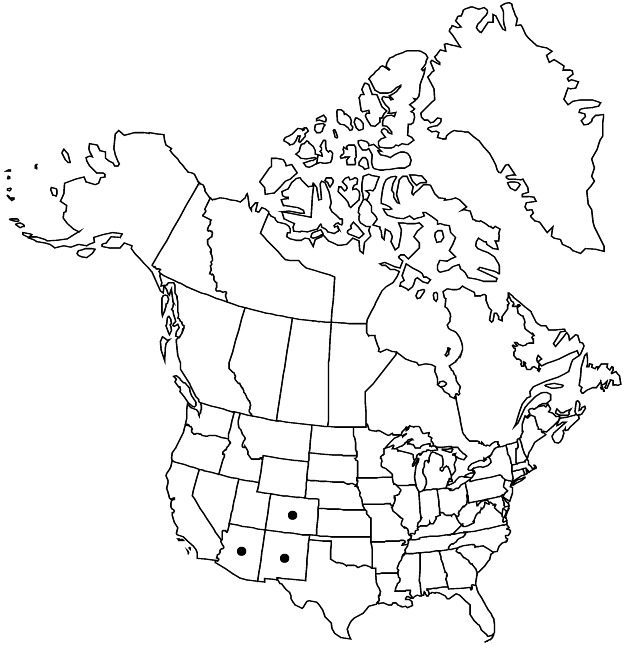Sedum stelliforme
Proc. Amer. Acad. Arts 20: 365. 1885,.
Herbs, perennial, somewhat tufted, glabrous. Stems root-stocks and erect shoots, branched proximally, sometimes bearing rosettes. Leaves alternate, spreading to ascending, sessile; blade blue-green, not glaucous, linear-oblanceolate, terete to subterete, 4–9(–15) × 1–2 mm, base broadly spurred, not scarious, apex obtuse. Flowering shoots erect or ascending, simple or branched, 1–4(–9) cm, (with small glistening patches); leaf blades linear-oblanceolate, base truncate or spurred; offsets not formed. Inflorescences compact, 3-parted cymes, (5–)10–25-flowered, monochasially branched; branches erect to spreading or recurved, rarely forked; bracts suboblong, base truncate or spurred. Pedicels absent. Flowers 5–6-merous; sepals erect to spreading, distinct, blue-green, linear to narrowly oblong, unequal, ca. 2–4(–6) × 0.7–1.5 mm, apex obtuse; petals spreading, distinct, white tinged with purple, oblong, somewhat carinate, 4–7 mm, apex acute or broadly mucronate; filaments white; anthers purplish; nectar scales dark pink, spatulate. Carpels stellately spreading in fruit, distinct, stramineous. 2n = 19, 22, 24, 44, 52.
Phenology: Flowering mid summer.
Habitat: Grassland, moist areas, moist cliffs in conifer forests
Elevation: 300-3000 m
Distribution

Ariz., Colo., N.Mex., Mexico (Chihuahua, Durango).
Discussion
Sedum stelliforme has glistening patches on the flowering branches and sepals. It is found in southern Colorado, Graham, Greenlee, and Apache counties in Arizona, the Zuni Mountains and Fort Wingate in New Mexico, and on the Mexican Plateau. More information is needed to determine whether S. topsentii should be separated from S. stelliforme.
Selected References
None.